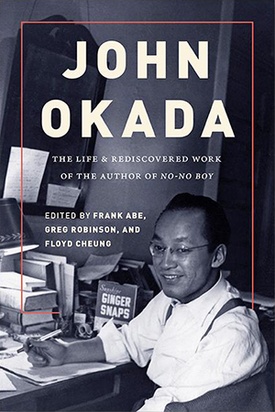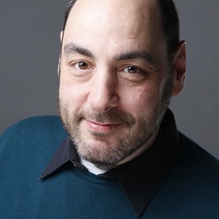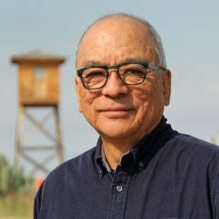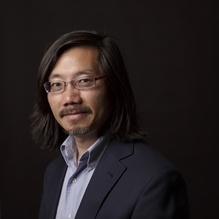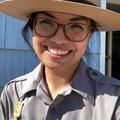I Must be Strong
I know now for what war I was born.
Every child is born to see some struggle,
But this conflict is yet the worst.
For my dark features are those of the enemy,
And my heart is buried deep in occidental soil.
People will say things, and people will do things,
I know they will, and I must be strong.—John Okada, University of Washington Daily, Dec 11, 1941
John Okada, author of the classic Nisei novel No-No Boy (1957) was a mystery to a generation of readers and historians. After studying literature and writing a play at the University of Washington as a young man, he published his first and only novel at 34, and passed away prematurely, with no other known surviving works -- until now.
The new book John Okada: The Life & Rediscovered Work of the Author of No-No Boy (University of Washington Press, 2018) reveals nine newly discovered works that include satirical plays, short stories, and one poem. It also features new biographical details, interviews, and historical and literary analysis that shine a brighter light on Okada’s life than ever before. Two of the book’s editors will be sharing about their discovery and work in an author’s discussion at the Japanese American National Museum on Saturday, February 2 at 2:00 pm. (For more information >>)
Despite his semi-mythical status as the author of No-No Boy, little was known about John Okada’s writing career until publication of this book. He was born in 1923 to Issei parents in Seattle, and studied English at the University of Washington until the start of WWII. He was briefly held at the Minidoka concentration camp in Idaho before heading into the combat zone as a pilot and Japanese language translator for the Military Intelligence Service, then served in the postwar US Occupation forces. After the war, he earned two more degrees in English and library sciences, but never found great demand for his writing and teaching skills; he moved from job to job, changing careers several times, and continued to write in his spare time.
Okada published No-No Boy in 1957, a now-classic story about a young Nisei man during WWII who decided to resist the draft, thereby straining his ties with his family and the larger Nikkei community. The book was published and brought into a silent Nikkei literary world a decade after the end of the war, and received little notice until after the author’s death in 1971, when it was rediscovered and celebrated by a new generation.
“I think that what is remarkable about Okada is his capacity for empathy,” Greg Robinson, one of the three co-editors, mused in a recent interview. “Even as a combat veteran, he could identify with and sympathize with all sorts of people, including draft resisters.” No-No Boy suggested that Okada was acutely aware of the tensions within the Japanese American and broader American community following the war. The previously unknown works of Okada that the editors recently unearthed prove that this was indeed the case.
In 2008, Robinson located five short stories and a one-act play that heavily satirized the American occupation of Japan in a postwar Seattle Japanese community newspaper archived at the University of Washington. The editors meanwhile located a pair of satirical essays, plus a poem, written on the evening of December 7, 1941, that exposed Okada’s own personal sense of dread following the bombing of Pearl Harbor. The latter is featured at the beginning of this article…”I dread the thought of having to leave home each day, / The thought that I must continue as naught has happened, / Everyone will smile, but what of their thoughts / As they gaze on one whose eyes are so black? / People will say things, and people will do things, / I know they will, and I must be strong.”
“Recovering these unknown works gives us a chance to see Okada’s craft in a larger way for the first time,” notes co-editor and journalist Frank Abe. “The raw emotion he put into No-No Boy was no accident; everything in the novel is there for a reason.” Abe, who will lead off the authors’ discussion with Robinson on February 2, became fascinated with the character of John Okada after reading his novel at a young age, and put in decades of research on the author’s story and literary style, but was never quite able to transform it into a full story until Robinson’s windfall discoveries in 2008.
Similarly, co-editor and literary scholar Floyd Cheung had the fruits of a ten-year research project on Okada’s education at UW that had never quite rounded out into a full argument when he got a call from Abe and Robinson. “I didn’t have enough to say at the time to justify an article,” Cheung admitted, “but fast forward to Greg and Frank’s discovery of Okada’s early works, some of which were written when Okada was at UW. My research now had a purpose!” His excitement is shared across the board by Asian American literature and historical scholars alike—several of whom contributed essays to this book.
Overall, John Okada: The Life & Rediscovered Work of the Author of No-No Boy reads less like an ode to one of Asian America’s great writers, and more like a deep sigh; the long-awaited culmination of decades of accumulated research and personal connection with Okada’s novel that could only be finished when the final puzzle pieces of additional works were found. It is a fascinating, heavily-detailed read…of course, best to do after you read a bit of No-No Boy to see what the fuss is all about with John Okada.
© 2019 Kimiko Medlock


